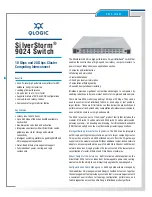
2-5
Description
Use the
ip
route-static
default-preference
command to configure the default preference for
static routes.
Use the
undo ip route-static default-preference
command to restore the default.
By default, the default preference of static routes is 60.
Note that:
z
If no preference is specified when configuring a static route, the default preference is used.
z
When the default preference is re-configured, it applies to subsequently added static routes
only.
Related commands:
ip route-static
and
display ip routing-table
in
IP Routing Basics
Configuration Commands
in the
Layer 3 - IP Routing Command Reference
.
Examples
# Set the default preference of static routes to 120.
<Sysname> system-view
[Sysname] ip route-static default-preference 120
ip route-static fast-reroute
Syntax
ip route-static
[
vpn-instance
vpn-instance-name
]
fast-reroute
route-policy
route-policy-name
undo ip route-static
[
vpn-instance vpn-instance-name
]
fast-reroute
View
System view
Default Level
2: System level
Parameters
vpn-instance
vpn-instance-name
: Specifies a VPN instance to configure FRR for all matching
static routes in it. The
vpn-instance-name
argument is a case-sensitive string of 1 to 31
characters.
route-policy
route-policy-name
: References a route policy. The
route-policy-name
argument is
a string of 1 to 19 characters.
Description
Use the
ip
route-static
fast-reroute
command to configure static route fast reroute (FRR).
Use the
undo
ip
route-static fast-reroute
command to restore the default.
By default, static route FRR is not configured.
Note that:
z
Configuring static route FRR needs to reference a route policy, which specifies a backup
next hop with the
apply fast-reroute backup-interface
command. For details about the
command and routing policy configuration, see
Route Policy Configuration
in the
Layer 3 -
IP Routing Configuration Guide
.
















































